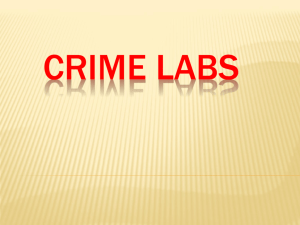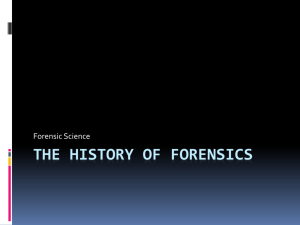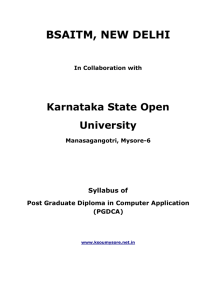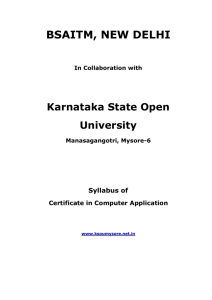Forensic science - Environmental-Chemistry
advertisement
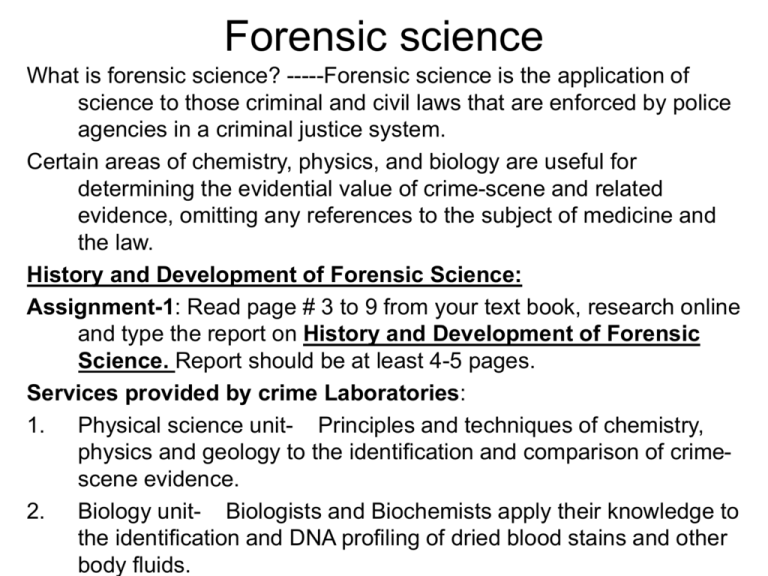
Forensic science What is forensic science? -----Forensic science is the application of science to those criminal and civil laws that are enforced by police agencies in a criminal justice system. Certain areas of chemistry, physics, and biology are useful for determining the evidential value of crime-scene and related evidence, omitting any references to the subject of medicine and the law. History and Development of Forensic Science: Assignment-1: Read page # 3 to 9 from your text book, research online and type the report on History and Development of Forensic Science. Report should be at least 4-5 pages. Services provided by crime Laboratories: 1. Physical science unit- Principles and techniques of chemistry, physics and geology to the identification and comparison of crimescene evidence. 2. Biology unit- Biologists and Biochemists apply their knowledge to the identification and DNA profiling of dried blood stains and other body fluids. 3. Firearms unit- The examination of firearms, discharged bullets, cartridge cases, shotgun shells, and ammunition of all types is conducted by the firearms unit. 4. Document Examination unit- The handwriting and typewriting on questioned documents are studied. 5. Photography unit- A complete photographic laboratory is maintained to examine and record physical evidence. Highly specialized techniques such as digital imaging, infrared, ultraviolet, and X-ray photography. Optional Services: 1. Toxicology unit- Body fluids and organs are examined by the toxicology group to determine the presence or absence of drugs and poison. Generally Intoxilyzer are used to determine the alcoholic consumption of individual. 2. Latent fingerprint unit- The responsibility for processing and examining evidence for latent fingerprints when they are submitted in conjunction with other lab-examinations belong to the latent fingerprint unit. Polygraph unit – The polygraph, or lie detector is an essential tool of the criminal investigation. Many police agencies incorporated this unit into laboratory’s administrative structure. 4. Voiceprint Analysis Unit- In cases involving telephoned threats or tape recorded messages, investigator may require the skills of the voiceprint analysis unit to tie the voice to a particular suspect. 5. Evidence collection Unit- This unit dispatches specially trained personnel; civilian and/or police to the crime scene to collect and preserve physical evidence that will later be processed at the crime laboratory. Explain the functions of forensic scientist: 1. Analysis of physical evidence 2. Provision of Expert Testimony 3. Furnishing Training in the proper Recognition, Collection, and Preservation of Physical Evidence Describe other forensic services: 1. Forensic pathology; Autopsy, Rigor mortis, Liver mortis, Algor mortis 3. 2. 3. 4. 5. 6. Forensic Anthropology: It is a specialty that is concerned primarily with the identification and examination of human skeletal remains. Forensic Entomology: The study of insects and their relation and their relation to a criminal investigation. Forensic Psychiatry: It is a specialized area in which the relationship between human behavior and legal proceedings is examined. They examine behavioral patterns of criminals as an aid inn developing a suspect’s behavioral profile. Forensic Odontology: Practitioners of forensic odontology provide information about the identification of victims when the body is left in an unrecognizable state. The characteristics of teeth, their alignment, and overall stricture of the mouth provide individual evidence for identifying a specific person. Also useful in bite mark analysis. Forensic Engineering: Forensic engineers are concerned with failure analysis, accidents reconstruction, and causes and origins of fires or explosions. Forensic engineers answer questions such as these; How did an accident or structural failure occur?






